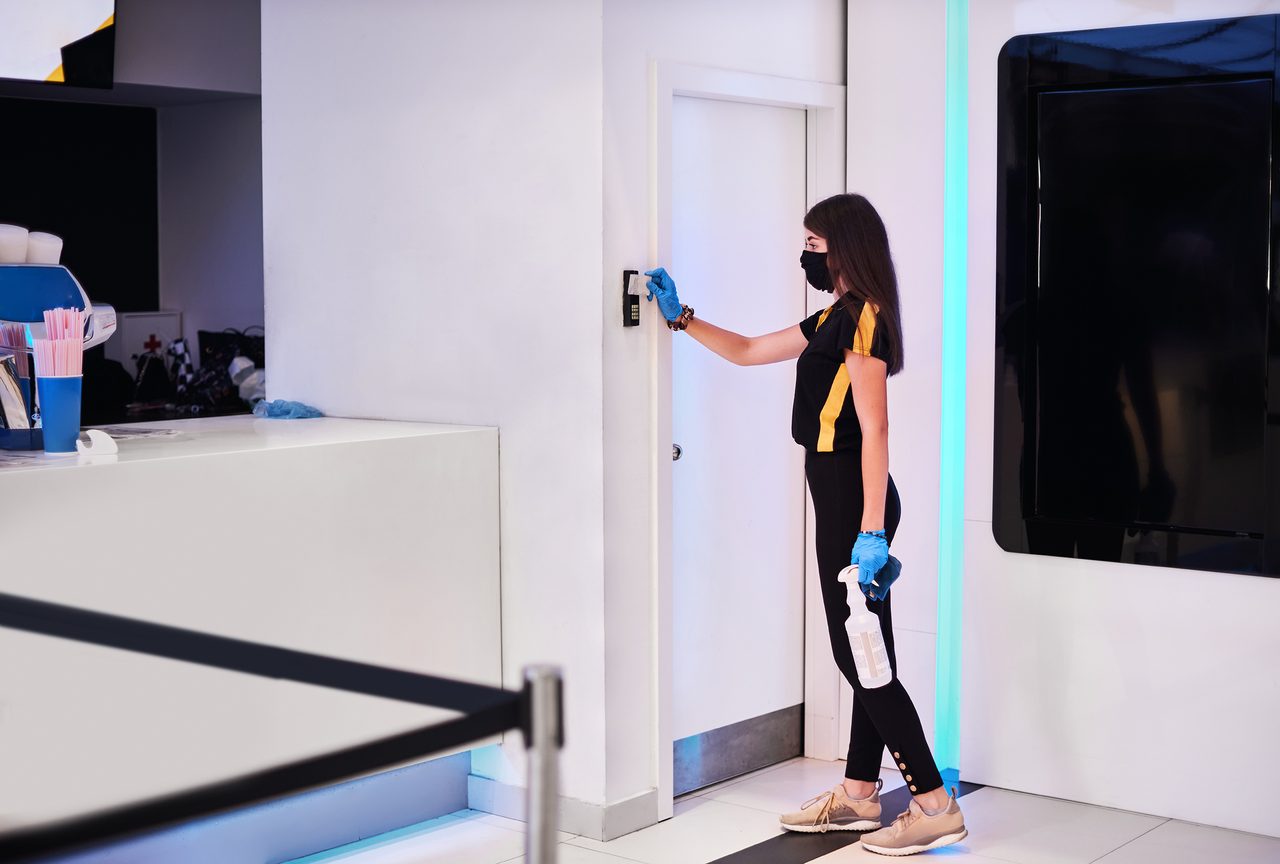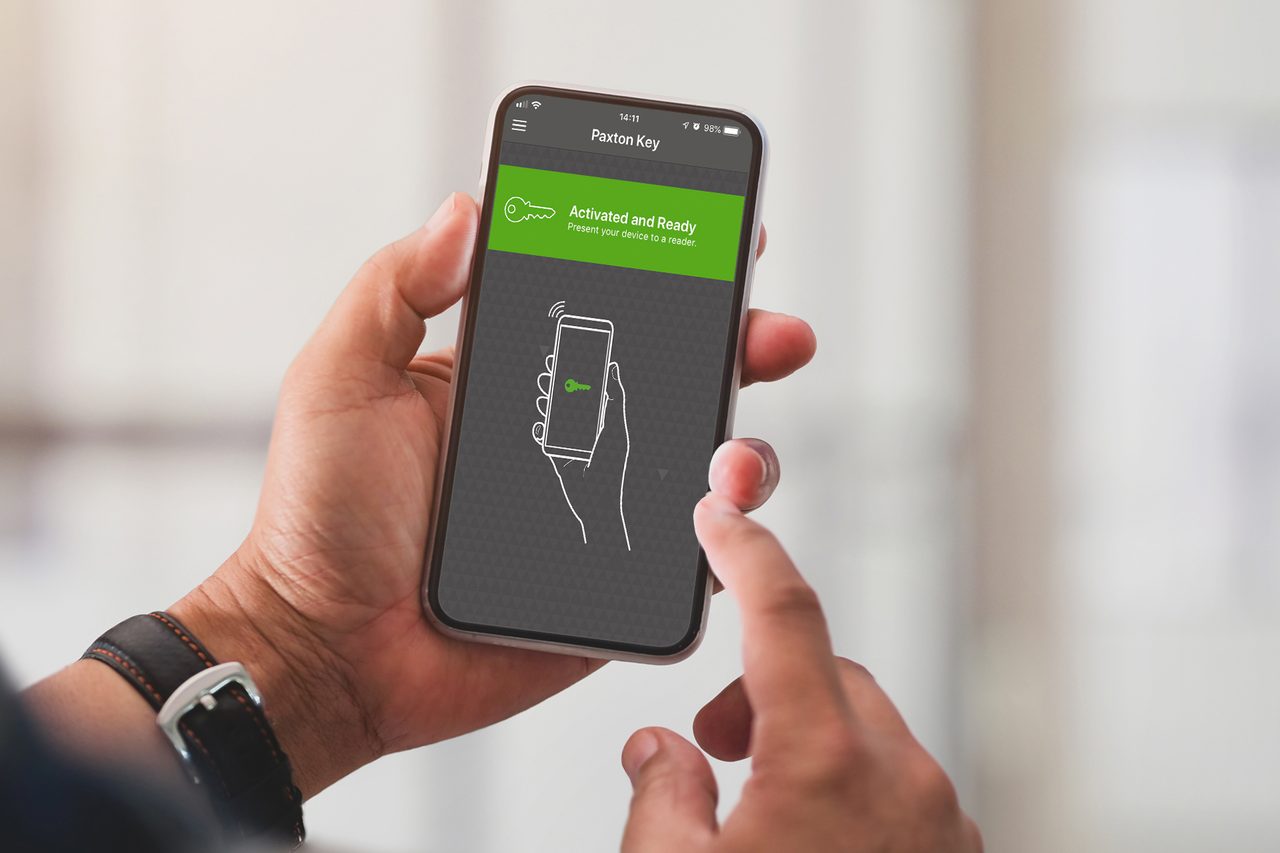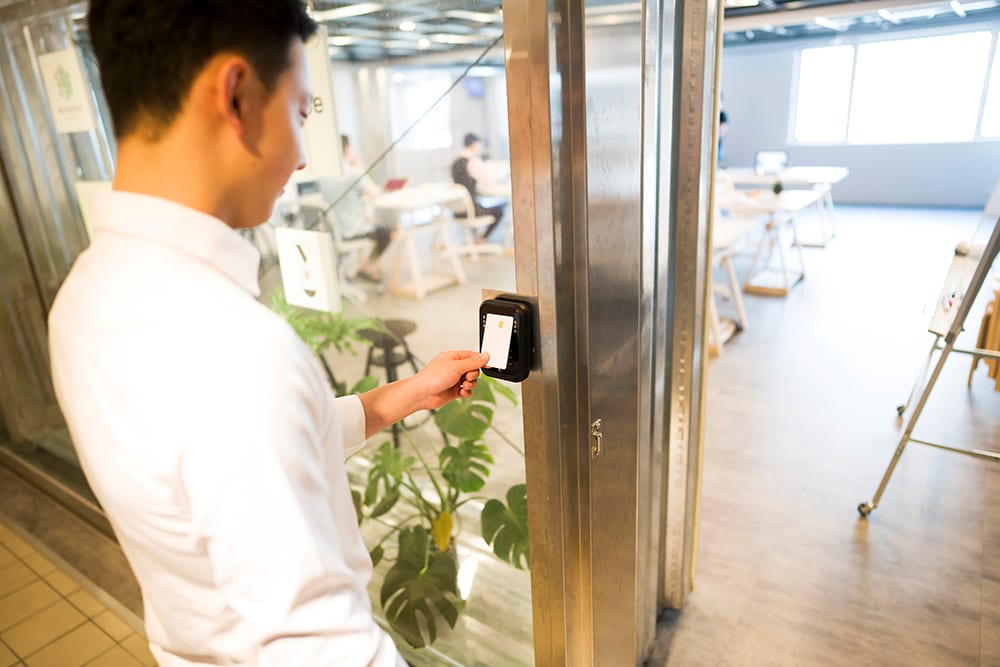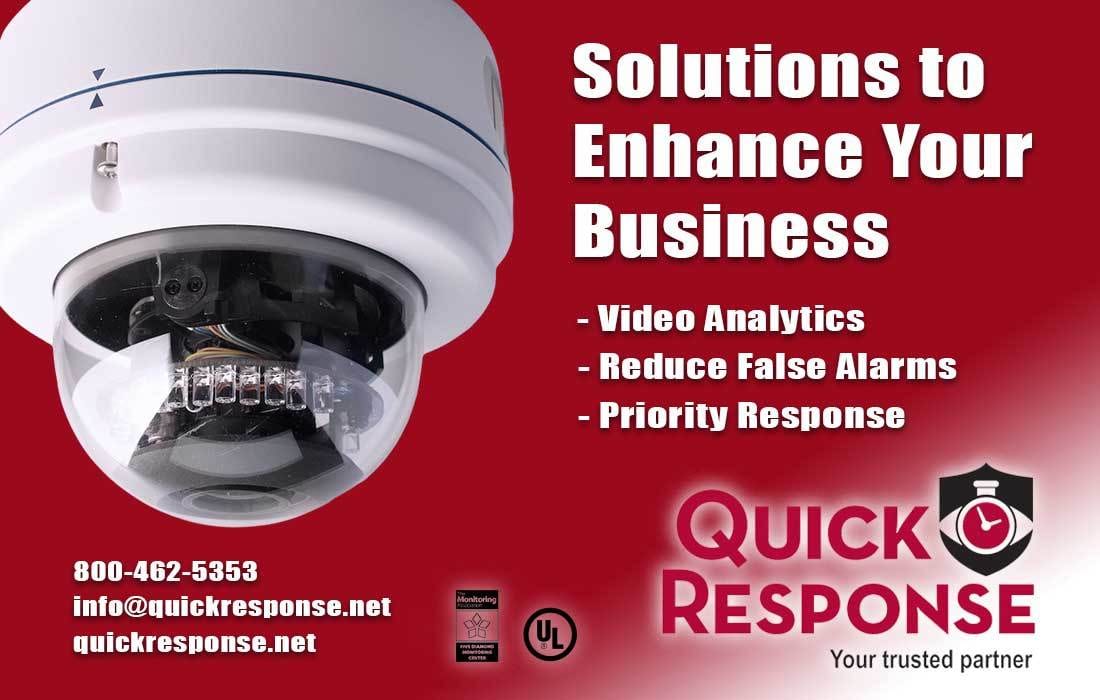// Access Control

Access control is now more important than ever, with building managers realizing the advantages of remote, cloud-based solutions.
vgajic/Serbia via Getty Images
Pandemic Spurs Demand in Cloud-Based Door Access Control
Cloud-based solutions provide new access control selling opportunities for security integrators.
By Annemarie Mannion, SDM Contributing Writer
There is no arguing that the COVID-19 pandemic has changed the world in ways that once seemed unimaginable. In the security space, that includes cloud-based door access control, which manufacturers say is drawing increased interest from security integrators, dealers and end users who now, more than ever, realize the advantages of being able to monitor door access remotely.
Who could’ve imagined that offices, schools and other facilities would shut down in 2020 and millions of employees would be sent home to work? With no one on-site to monitor door access, end users who had overlooked cloud-based access control previously, began to tap into solutions that operate either fully or partially in the cloud.
“With COVID-19, a lot of organizations saw that working from home and trying to monitor a system from a different premises was a lot harder,” says Despina Stamatelos, senior commercial manager at Montreal-based Genetec. “That’s resulted in an increase in interest from end users in cloud-based solutions.”
Jon Adams, executive director of business development for Digital Monitoring Products (DMP) Springfield, Mo., agrees. He says businesses that tried cloud-based access control during the pandemic got hooked on it.
“Before, they didn’t know who was coming in (to their facilities) or when they were arriving,” he says. “Now they know. That’s important for a lot of small to medium businesses, and that, I think, is at the heart of this (business).”
Words of Wisdom
What advice do manufacturers have for integrators who want to get in on cloud-based door access control? Here’s what three of them have to say:
“Find a system that has a wide range of features and can meet many customers’ requirements. Customer’s requirements continue to evolve. Look for a system that is flexible and modular, enabling different devices and services to be added as the customer needs them. Learn about it. Speak to the manufacturers, speak to your sales rep or call in to support if you have any questions, feedback, or technical requirements. When a customer mentions ‘cloud’, determine what their requirement is for a cloud system; there are many different interpretations of the word.” — Jonathan Collett, Paxton Access
“Know your value proposition and work with your solution provider to make sure your team understands it. Think through the operational aspects of managing recurring services and how this might impact your sales representatives; and look for tools and mechanisms to help you track and manage configuration changes on site. Learn the total cost of ownership story and help articulate it to your customers. Does this eliminate the need for a local IT resources? Does it save time and money by letting you install the system at a remote site without a network while still connecting back to the enterprise’s master database? Also, how easy is it to replace that older system and do it without replacing all existing equipment? Find a solution provider that helps you understand your costs, rewards you for volume and helps you train and educate your end users without additional expenses.” — Cooper Briscoe, LenelS2
Embrace it (cloud-based access control) now before it is too late. The world has been moving in this direction for 10 years and security is catching up. You don’t want to miss the boat. It is better to be in front of your competition than behind. It’s a great way to lower capital costs, for both the integrator and the end customer, and it provides a better user experience, more flexibility and convenience with much less pain. — Brian Matthews, Feenics
//
There will always be a need for access control, but that was perhaps even more true during the pandemic, when there were fewer people working in offices, says Jonathan Collett, product executive, Paxton Access Inc., Greenville, S.C. “Some businesses also may struggle to employ security during these times, increasing the need to secure their building in a different way.”
The pandemic also prompted some integrators to consider cloud-based access control.
“They are seeing that cloud-based solutions are here to stay and that they are going to be more prominent in the future,” Stamatelos says. “There is definitely more interest in incorporating that (model) into their businesses.”
Cloud-Based Solutions
Even before the pandemic, manufacturers had launched cloud-based access control products, and are continuing to refine and improve them.
Genetec started offering its Security Center Synergis IP access control system fully in the cloud or as a hybrid of on-premises and the cloud three years ago.
While many manufacturers say that small and mid-size companies display the most interest in cloud-based solutions like these, Stamatelos has noticed that even large organizations are considering them, and including input from their technology experts into the purchase-making process.
“Previously, they thought, ‘Oh, the cloud. How is that secure?’” she says. “Now we’re seeing that IT is much more involved in decision making when it comes to new access control systems. There is a drive to bring IT into the process.”
Having IT at the table pushes that cloud-based solution forward, she adds. “I’ve seen them be more interested. For us, we’ve doubled our sales of cloud-based solutions in the last year.”
End users and integrators alike have a range of new products to choose from. For example, in February, DMP introduced X1, a solution that is fully managed in the cloud and which allows users to handle a variety of common door access scenarios.
“I put X1 at doors, but I manage them through the cloud,” Adams says. “That’s where I add schedules, user credentials, all of my auto lock and unlock things, my built-in rules and my, ‘If this happens then that happens’ scenarios. We say they are managed in the cloud, but not hosted there. Everything that’s done gets downloaded on to all of the X1s on that site.”
Paxton10 includes simple installation, free mobile and smart watch apps, video entry, fire and intruder alarm integration.
IMAGE COURTESY OF PAXTON ACCESS INC.

The product can accommodate up to 10,000 credentials per door, and has full Edge redundancy. The X1 also requires no wiring.
Brian Matthews, director of sales for Feenics Inc., Ottawa, says cloud-based products offer many new selling opportunities for integrators to take advantage of.
“By eliminating servers you can appeal to cloud-friendly customers,” he says. “You are also lowering the total cost of ownership so you can appeal to more customers. Of course, one of the biggest advantages is that, with cloud systems, you can securely access and use them from anywhere in the world.”
Feenics launched Keep, an open/non-proprietary, enterprise class access control solution, seven years ago.
“We are constantly iterating and improving our Keep solution,” he says. “One of the common responses we get from integrators is, ‘I didn’t realize you could do so much in the cloud.’”
Pricing Matters
Integrators have had their reasons for not embracing cloud-based door access control, but that’s changing.
“Before COVID-19, they weren’t very keen on offering the cloud-based solution,” says Despina Stamatelos, Genetec. “It was something new for them. Something they didn’t necessarily know how to position to an end user. Or, they didn’t know how the different pricing model would work for them. There was some hesitancy.”
That hesitancy is ebbing away as more integrators realize that the pricing model can work to their advantage, particularly when selling to end users that are attracted to the idea of spreading out the cost.
“Traditionally, with access control, you get everything up front,” Stamatelos says. “Customers really have to budget. Having service-based payments where you pay monthly or every six months or yearly — whatever that may be — gives customers a lot more options and opens up the budget easier versus when they have to spend a lot of money upfront.”
While this is a compelling selling point, she acknowledges that adopting a new business model may not be easy for integrators.
“They do have to take some risk because they are buying the hardware upfront from their manufacturers,” she says. “There’s a financial risk so they need to see how that service model will work for them.”
Explaining the different payment method is one way integrators who receive a ‘No’ from an end user can turn that into a ‘Yes,’ she says.
“For a customer who says, ‘I don’t have the budget for it this year, come to me next year,’ they can say, ‘Let me talk to you about how we can work around your budget because you don’t have to pay upfront for it.’ Even hardware can be put into that service model. It does open up a conversation with end users,” she says.
//
Matthews says some other selling points for cloud-based solutions are the elimination of costly IT management for servers, operating systems, databases and networks; the elimination of legacy software that is stale and devoid of real innovation for years; and the elimination of unnecessary downtime when performing system upgrades.
In March, LenelS2, Pittsford, N.Y., launched Elements, a cloud-based unified access control and video management system that utilizes a software-as-a-service (SaaS) model.
“Because of the continuous delivery model that the Elements system employs, new features and functionality are rolled out often with no need for a costly upgrade or a site visit from the value-added reseller (VAR), or systems integrator,” says Cooper Briscoe, product management lead, cloud solutions.
The Elements systems also works in conjunction with the company’s OnGuard access control system.
“This helps existing OnGuard customers extend their enterprise deployments to remote sites, which may lack corporate networks,” Briscoe says. Elements is targeted to small and mid-size business, focusing on installations of up to 64 readers, but that number is expected to increase over time as new feature sets are introduced.
Another new cloud-based product is Paxton10, launched in the U.S. in February, a license-free access control and video management solution on a single platform. Its selling points include simple installation, free mobile and smart watch apps, video entry, fire and intruder alarm integration.
“You can connect to your Paxton10 system via the cloud anywhere in the world using the free remote access feature, giving you all the same functionality as if you were administering it on site,” says Jeremy Allison, senior product manager, Paxton Access. “It allows the integrator to offer one system to meet both requirements and provides the user with one simple-to-use interface.”
Even before the pandemic, manufacturers had launched cloud-based access control products, and are continuing to refine and improve them.
SrdjanPav/E+ via Getty Images

The Future of Cloud
Given the increased demand for keeping workplaces healthy as a result of the pandemic, manufacturers say the future looks bright for products that can handle that issue.
“There is a concerted shift towards mobile credentials and offering a touchless access experience,” Briscoe says.
“Cloud-based access control offers end users and integrators the ability to issue credentials from home for those heading to the office, or check a video feed from their phone over lunch to remotely grant access to an employee,” he adds. “Features like these help demonstrate why the evolution and adoption of cloud-based access control have accelerated as a result of the pandemic. All these examples have increased the need for this convenience and highlight what cloud solutions can offer.”
As challenging as the pandemic has been, the increased drive for cloud-based access control is a benefit, the manufacturers say.
If asked to bet on the future of access control, Stamatelos says she sees it in the cloud.
“We foresee that cloud-based access control will continue to grow,” she says. “We believe it will double versus on-premises solutions over the next few years. That’s why we are so majorly focused on having cloud-based solutions. We believe it is the future.” SDM

